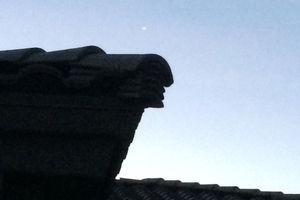It looks like you're using an Ad Blocker.
Please white-list or disable AboveTopSecret.com in your ad-blocking tool.
Thank you.
Some features of ATS will be disabled while you continue to use an ad-blocker.
share:
a reply to: visitedbythem
'stashe didn't quite fill in?
But exoplanets are cool!
'stashe didn't quite fill in?
But exoplanets are cool!
edit on 1/28/2017 by Phage because: (no reason given)
originally posted by: Phage
a reply to: visitedbythem
'stashe didn't quite fill in?
But exoplanets are cool!
Heres on Maui

Off to bed, 12 hour shift tomorrow. Gotta be up at 415.
Enjoy your evening
Enjoy your evening
Off topic does not adequately describe what happened to this thread.
However, it was fun though, and still thought provoking in it's original context.
However, it was fun though, and still thought provoking in it's original context.
originally posted by: Phage
a reply to: charlyv
How do you know it isn't a bottom-up view?
This is the real deal here... and the luck of being able to get a top-down view, that would have not been possible to detect any planets around this star using the eclipsing method.
The animation is cool. The first observation was in 2008.
www.ncbi.nlm.nih.gov...
Phage is my hero.
a reply to: charlyv
If the star is 5 times brighter than our Sun, and the planets are orbiting at 10-100 AU, then it seems to me that even the nearest planet would be outside the habitable zone. Light intensity decreases exponentially with distance. So is that a correct assumption?
soulwaxer
If the star is 5 times brighter than our Sun, and the planets are orbiting at 10-100 AU, then it seems to me that even the nearest planet would be outside the habitable zone. Light intensity decreases exponentially with distance. So is that a correct assumption?
soulwaxer
originally posted by: soulwaxer
a reply to: charlyv
If the star is 5 times brighter than our Sun, and the planets are orbiting at 10-100 AU, then it seems to me that even the nearest planet would be outside the habitable zone. Light intensity decreases exponentially with distance. So is that a correct assumption?
soulwaxer
Agreed, however they are huge gas balls that we see, which, if we know anything about such things in our solar system, may stay that way. The other thing is the resolution is so bad, that small, rocky planets could be there as well and are still in nebulae, so we cannot see them.
a reply to: TEOTWAWKIAIFF
Now we can all see it.

Now we can all see it.

edit on 28-1-2017 by charlyv because: spelling , where caught
originally posted by: grey580
SCIENCE!!!!!!!!!!!
It's amazing how technology is growing leaps and bounds. Pretty soon we won't be just seeing planets in another solar system through a telescope. We'll be visiting them.
Well done.
No we won't, we aren't going anywhere.
Not even with this direct imaging,
www.planetary.org...
With current observation technology direct imaging is possible on on very rare occasions. It is most likely to succeed when conditions are just right, namely when a bright planet orbits at a great distance from a nearby star. Because of these strict limitations direct imaging is not a good candidate for large-scale surveys searching for new exoplanets. For the forseeable future directly imaged planets will remain very much the exception among known exoplanets rather than the rule. The method's importance today is as much psychological as it is scientific.
Indeed it is.
All they have to do is show some blurry gif with little moving lights and people are hypnotized by it.
Or from the OP article,
“The Beta Pic animation looked so cool that we’ve wanted to do more,” Wang said, explaining why the HR 8799 movie was made. “We wanted to make one that was even more impactful for the audience and could begin to show what one of these systems looks like.” I think they succeeded.
I think so too but you have a great audience.
a reply to: AttentionGrabber
They are the result of direct observation, however you want to negatively paint the achievement. Great science has already come out of it.
They are the result of direct observation, however you want to negatively paint the achievement. Great science has already come out of it.
Wang said that the animation is based on eight observations of the planets since 2009. He then used a motion interpolation algorithm to draw the orbit between those points. Much can be learned from the motion of the planets, however long it may take for them to circle their sun. Based on the Keck observations, astronomers have concluded that the four planets orbit in roughly Keplerian motion around the star — almost circular, but not entirely.
originally posted by: RandyMoskovich
originally posted by: Phage
a reply to: charlyv
How do you know it isn't a bottom-up view?
This is the real deal here... and the luck of being able to get a top-down view, that would have not been possible to detect any planets around this star using the eclipsing method.
The animation is cool. The first observation was in 2008.
www.ncbi.nlm.nih.gov...
Phage is my hero.
Did he help with the study?
new topics
-
BIDEN Admin Begins Planning For January 2025 Transition to a New President - Today is 4.26.2024.
2024 Elections: 2 hours ago -
Big Storms
Fragile Earth: 4 hours ago -
Where should Trump hold his next rally
2024 Elections: 7 hours ago -
Shocking Number of Voters are Open to Committing Election Fraud
US Political Madness: 7 hours ago -
Gov Kristi Noem Shot and Killed "Less Than Worthless Dog" and a 'Smelly Goat
2024 Elections: 8 hours ago -
Falkville Robot-Man
Aliens and UFOs: 8 hours ago -
James O’Keefe: I have evidence that exposes the CIA, and it’s on camera.
Whistle Blowers and Leaked Documents: 9 hours ago -
Australian PM says the quiet part out loud - "free speech is a threat to democratic dicourse"...?!
New World Order: 10 hours ago -
Ireland VS Globalists
Social Issues and Civil Unrest: 10 hours ago -
Biden "Happy To Debate Trump"
2024 Elections: 11 hours ago
top topics
-
James O’Keefe: I have evidence that exposes the CIA, and it’s on camera.
Whistle Blowers and Leaked Documents: 9 hours ago, 17 flags -
Australian PM says the quiet part out loud - "free speech is a threat to democratic dicourse"...?!
New World Order: 10 hours ago, 15 flags -
Blast from the past: ATS Review Podcast, 2006: With All Three Amigos
Member PODcasts: 13 hours ago, 13 flags -
Biden "Happy To Debate Trump"
2024 Elections: 11 hours ago, 13 flags -
Ireland VS Globalists
Social Issues and Civil Unrest: 10 hours ago, 9 flags -
Mike Pinder The Moody Blues R.I.P.
Music: 13 hours ago, 8 flags -
BIDEN Admin Begins Planning For January 2025 Transition to a New President - Today is 4.26.2024.
2024 Elections: 2 hours ago, 7 flags -
What is the white pill?
Philosophy and Metaphysics: 13 hours ago, 6 flags -
Shocking Number of Voters are Open to Committing Election Fraud
US Political Madness: 7 hours ago, 6 flags -
RAAF airbase in Roswell, New Mexico is on fire
Aliens and UFOs: 11 hours ago, 5 flags
active topics
-
BIDEN Admin Begins Planning For January 2025 Transition to a New President - Today is 4.26.2024.
2024 Elections • 18 • : rickymouse -
RAAF airbase in Roswell, New Mexico is on fire
Aliens and UFOs • 12 • : pianopraze -
A Warning to America: 25 Ways the US is Being Destroyed
New World Order • 29 • : 19Bones79 -
Big Storms
Fragile Earth • 15 • : Caver78 -
What is the white pill?
Philosophy and Metaphysics • 22 • : AlexandrosOMegas -
University of Texas Instantly Shuts Down Anti Israel Protests
Education and Media • 315 • : CriticalStinker -
Gov Kristi Noem Shot and Killed "Less Than Worthless Dog" and a 'Smelly Goat
2024 Elections • 58 • : cherokeetroy -
Biden "Happy To Debate Trump"
2024 Elections • 51 • : rickymouse -
Hate makes for strange bedfellows
US Political Madness • 53 • : 19Bones79 -
SETI chief says US has no evidence for alien technology. 'And we never have'
Aliens and UFOs • 79 • : SchrodingersRat


